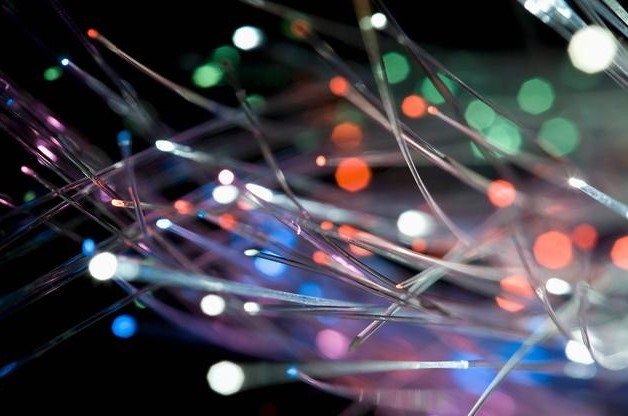When it comes to high-speed data transmission, multi-mode fiber optic cables stand out as an optimal solution for short-distance communication needs. These fiber optic cables are designed specifically for environments where speed and bandwidth are crucial but transmission distances are limited, making them an ideal choice for data centers, local area networks (LANs), and industrial applications. Let’s explore the key features that make multi-mode fiber optic cables a superior choice for short-distance data transmission.

1. High Data Transmission Rates
Multi-mode fiber optic cables are known for their ability to handle exceptionally high data transmission rates. Unlike traditional copper cables, which can struggle with speed and interference, multi-mode fiber cables can support speeds of up to 100 Gbps over short distances. This makes them perfect for applications where rapid data exchange is essential, such as in modern office buildings, financial institutions, and cloud computing hubs.
2. Short-Distance Efficiency
One of the defining characteristics of multi-mode fiber optic cables is their effectiveness over short distances. They typically excel in transmitting data over distances of up to 550 meters, which is ideal for environments like data centers and LANs where servers and storage devices are often in close proximity. Multi-mode fiber optic cables use multiple light paths to transmit signals, which increases the bandwidth but limits the distance they can cover compared to single-mode fibers. This distance limitation, however, is a non-issue in environments where devices are relatively close to each other.
3. Cost-Effective Solution
For businesses that need high-speed data transmission without breaking the bank, multi-mode fiber optic cables offer a cost-effective solution. They are generally less expensive to install and maintain than their single-mode counterparts. Multi-mode fibers require lower precision in alignment during installation and are compatible with less expensive light sources, such as LEDs and VCSELs (Vertical-Cavity Surface-Emitting Lasers), further reducing overall costs.
4. Versatile and Scalable
Multi-mode fiber optic cables are designed with versatility in mind. They support a wide range of applications and can be easily integrated into existing network infrastructures. Whether you're working with Ethernet, Fibre Channel, or InfiniBand protocols, multi-mode fibers can accommodate these technologies seamlessly. Moreover, as your network grows, multi-mode fibers are scalable, allowing for simple upgrades in the future without the need for major infrastructure changes.
5. Reduced Signal Degradation
While multi-mode fibers have a shorter range than single-mode fibers, they perform exceptionally well within their range, transmitting data with minimal signal loss. This is especially important in data-intensive environments where clear, uninterrupted transmission is critical. Multi-mode fiber optic cables use a larger core (50 to 62.5 microns in diameter) than single-mode fibers, allowing for easier light transmission and reducing the risk of signal degradation over short distances.
6. Enhanced Durability and Reliability
Multi-mode fiber optic cables are built to withstand harsh conditions and continuous usage, ensuring reliable performance even in demanding environments. They are less susceptible to interference from electromagnetic or radio frequency signals, making them ideal for industrial settings where machines and electronics might otherwise cause disruptions in data transmission. Furthermore, these cables are highly resistant to environmental factors such as temperature changes and physical damage, making them a durable choice for long-term data solutions.
7. Low Latency and High Bandwidth
In applications where low latency and high bandwidth are required, multi-mode fiber optics excel. The ability to transmit large amounts of data at high speeds ensures that real-time applications, like video conferencing, streaming, and cloud computing, perform without lag or interruption. This characteristic makes multi-mode fibers a preferred option for industries like healthcare, education, and entertainment, where seamless, high-speed data transfer is critical to operations.
8. Ease of Installation
Compared to single-mode fibers, multi-mode fiber optic cables are easier to install and terminate. Their larger core size simplifies the alignment of optical components, reducing the complexity and cost of the installation process. This ease of installation makes multi-mode fibers an attractive choice for businesses that need to upgrade their networks quickly and efficiently without sacrificing performance.
9. Energy Efficiency
Multi-mode fiber optics are an energy-efficient choice for businesses seeking to reduce their operational costs. They consume less power during data transmission compared to copper cables, which is especially beneficial in large-scale data centers where energy usage can significantly impact the overall budget. By minimizing power consumption, multi-mode fiber optics contribute to more sustainable and cost-effective operations.
10. Future-Proofing Technology
As technology continues to advance, the need for faster, more reliable data transmission is only going to increase. Multi-mode fiber optic cables provide a future-proof solution for businesses, offering the flexibility to scale up as demands grow. With the ability to support higher data rates and future upgrades, investing in multi-mode fiber now ensures your network is ready for tomorrow’s challenges.
Conclusion
Multi-mode fiber optic cables are the go-to choice for businesses looking to optimize short-distance data transmission. Their high-speed capabilities, cost-effectiveness, and reliable performance make them an essential component of modern communication networks. Whether you are upgrading a data center or building a local area network, multi-mode fiber optics will provide the speed, reliability, and scalability needed to support today’s demanding digital environments.
By choosing multi-mode fiber optics, businesses can ensure efficient, high-performance data transmission without compromising on cost or quality, making it the perfect solution for short-distance communication needs.



